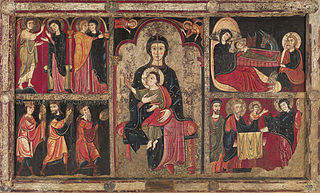
The Altar frontal from Avià is a rare Romanesque altar frontal exhibited at the National Art Museum of Catalonia in Barcelona. It is the front of the altar of the church of St. Mary of Avià, in the county of Berguedà, later moved to MNAC Barcelona, while the church has a replica in place. It is dated to the 13th century or earlier, and was painted by an unknown artist.
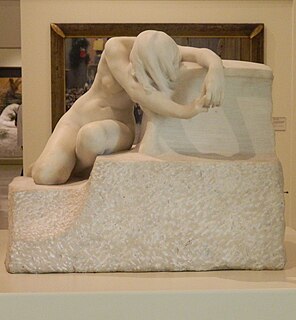
Desolation is a 1907 sculpture by Josep Llimona in the collection of the National Art Museum of Catalonia in Barcelona.
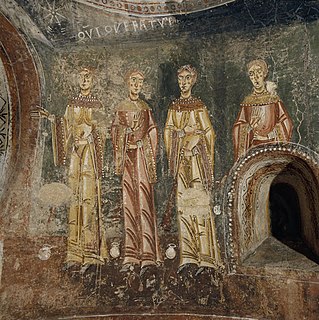
The Southern apse from Pedret is a fresco painting which was acquired during the 1919-1923 campaign of the Junta de Museus. The artwork originated from the southern apsidiole of the Church of Sant Quirze de Pedret and is currently exhibited in the Romanesque Art collection at the Museu Nacional d’Art de Catalunya, Barcelona, Spain.

The Apse of Sant Climent de Taüll is a Romanesque fresco in the National Art Museum of Catalonia, Barcelona. This is one of the masterpieces of the European Romanesque. from which the unknown Master of Taüll takes his name. Painted in the early 12th century, it was in the church of Sant Climent de Taüll at the Vall de Boí, Alta Ribagorça in the Catalan Pyrenees until removed in 1919-1923, along with other parts of the fresco decoration, in an attempt to preserve the paintings by placing them in a stable, secure museum setting.
Still Life II is a sculpture by Catalan artist Juli González done in the 1920s, and currently exhibited at the National Art Museum of Catalonia.

Erill la Vall Descent from the Cross is a set of seven 12th-century wooden sculptures from the Pyrenees village of Erill la Vall in Catalonia, originally painted, comprising a complete Romanesque Descent from the Cross sculpture group, which in Catalonia has the peculiarity that it is made up of seven figures. Two of the carvings are kept at the National Art Museum of Catalonia (MNAC) and the rest at the Vic Episcopal Museum.
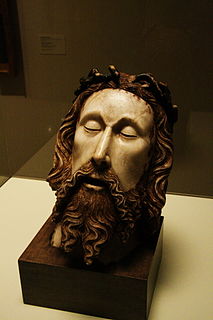
The Head of Christ is a Jesus head conserved at the National Art Museum of Catalonia.
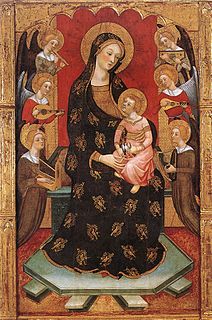
The Virgin of the Angels is a painting by Pere Serra conserved at the National Art Museum of Catalonia.
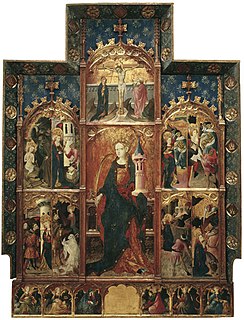
The Altarpiece of Saint Barbara is a painting by Gonçal Peris conserved at the National Art Museum of Catalonia.
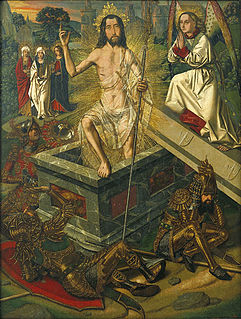
Resurrection is a painting by Bartolomé Bermejo conserved at the National Art Museum of Catalonia.
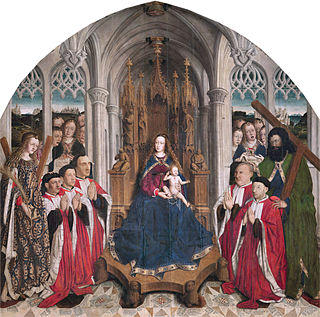
The Virgin of the Consellers is a painting by Lluís Dalmau conserved at the National Art Museum of Catalonia.
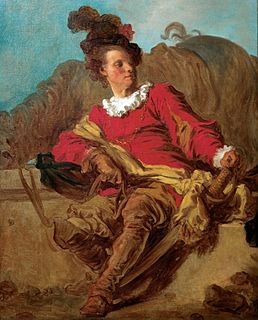
The Jean-Claude Richard, Abbot of Saint-Non, Dressed à l'Espagnole is a painting by Jean-Honoré Fragonard conserved at the National Art Museum of Catalonia.

The Immaculate Conception is a painting by Francisco de Zurbarán, executed in 1632, conserved at the National Art Museum of Catalonia.

The Martyrdom of Saint Bartholomew is a painting by Jusepe de Ribera conserved at the National Art Museum of Catalonia.

The Mural Paintings from the Herrera Chapel is group of mural painting by Annibale Carracci and collaborators, conserved between the National Art Museum of Catalonia and de Museo del Prado.
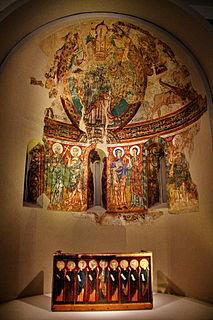
The Apse from La Seu d'Urgell is an apse exhibited at the National Art Museum of Catalonia in Barcelona.
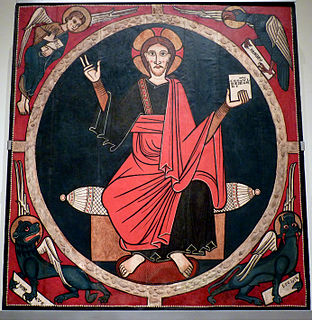
The Baldachin from Tost is a painted baldachin exhibited at the National Art Museum of Catalonia in Barcelona.
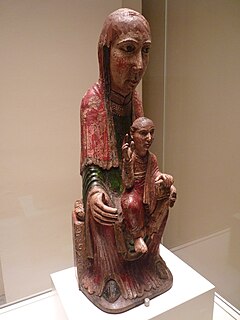
The Virgin from Ger is a sculpture exhibited at the National Art Museum of Catalonia in Barcelona.

The Altar frontal from Cardet is an altar conserved at the Museu Nacional d'Art de Catalunya, in Barcelona.
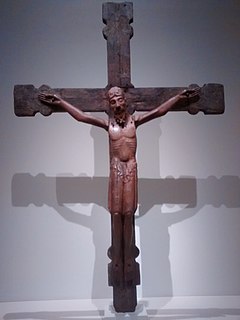
The Christ from 1147 is a sculpture exhibited at the National Art Museum of Catalonia in Barcelona.




















